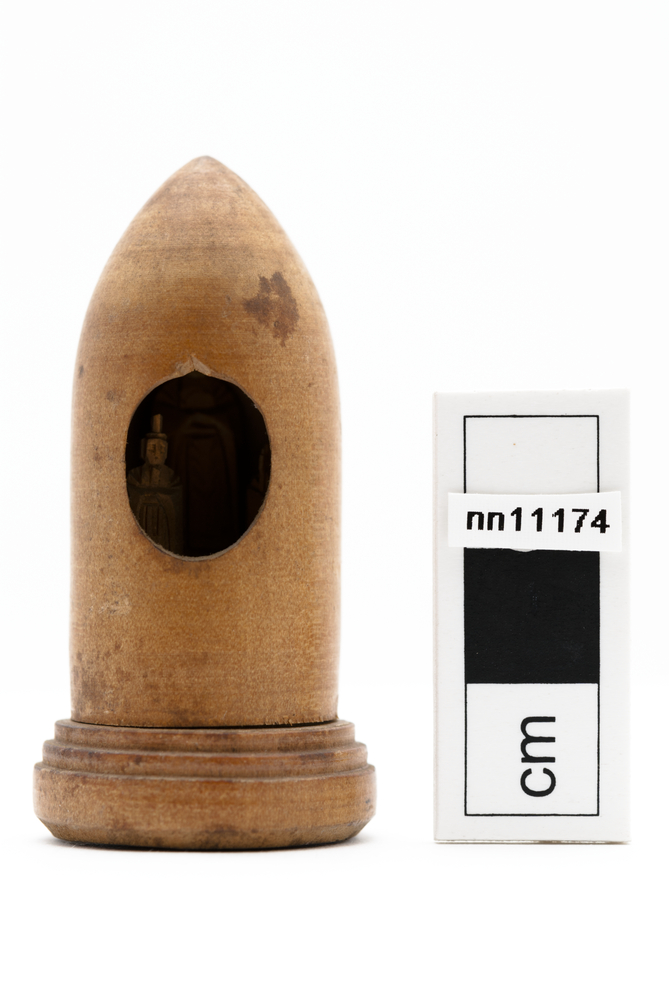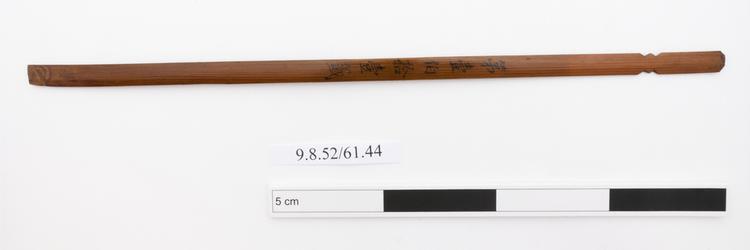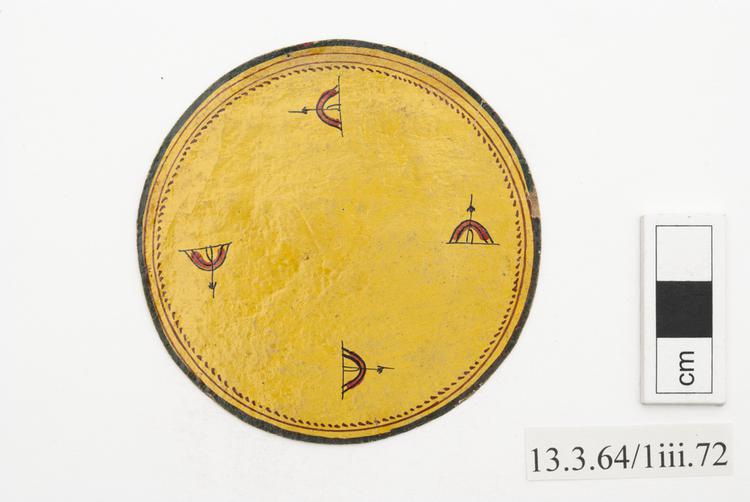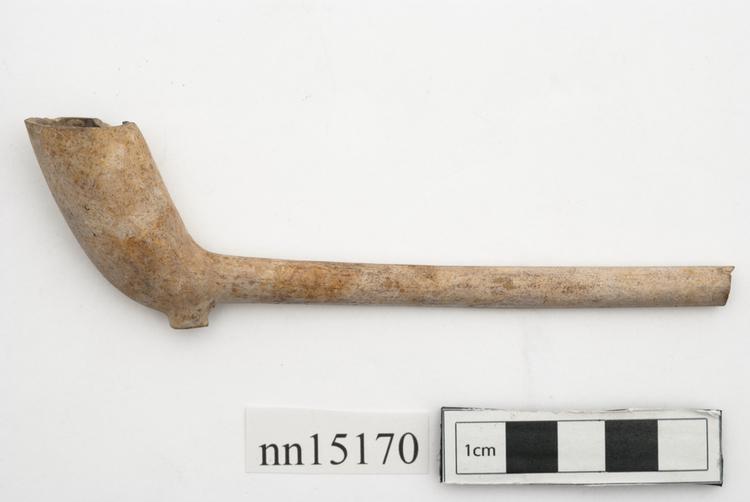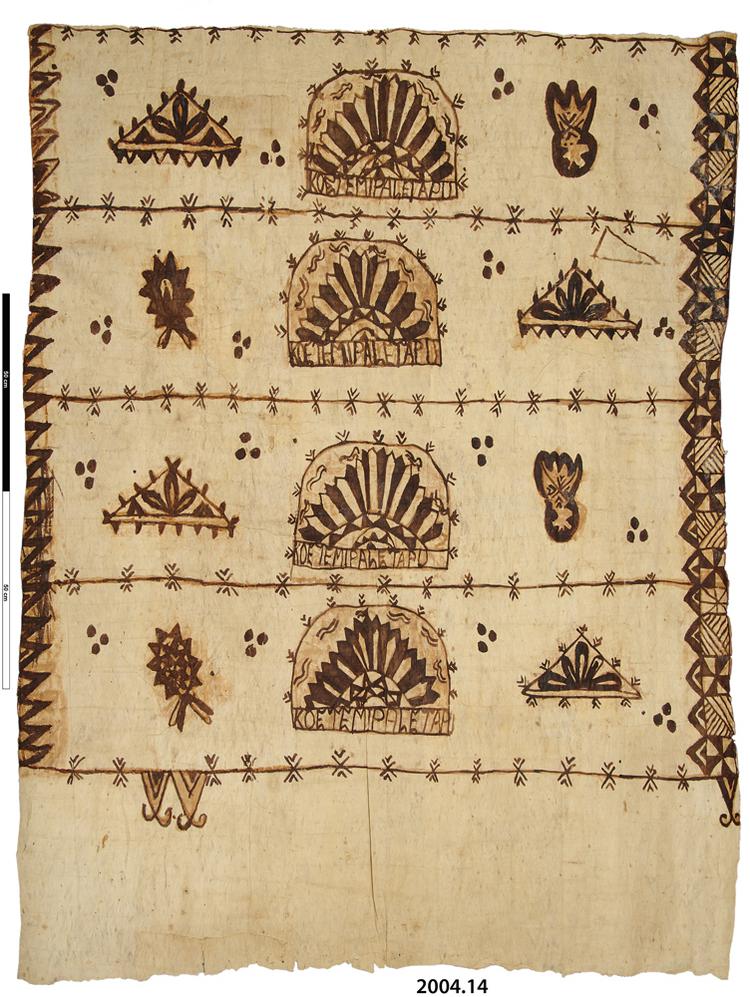
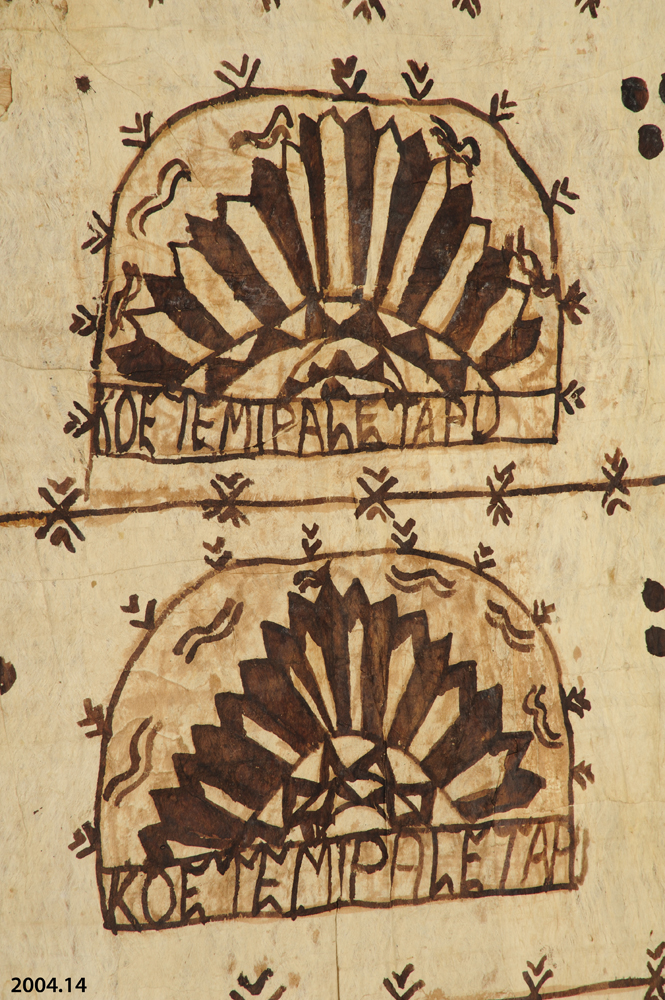
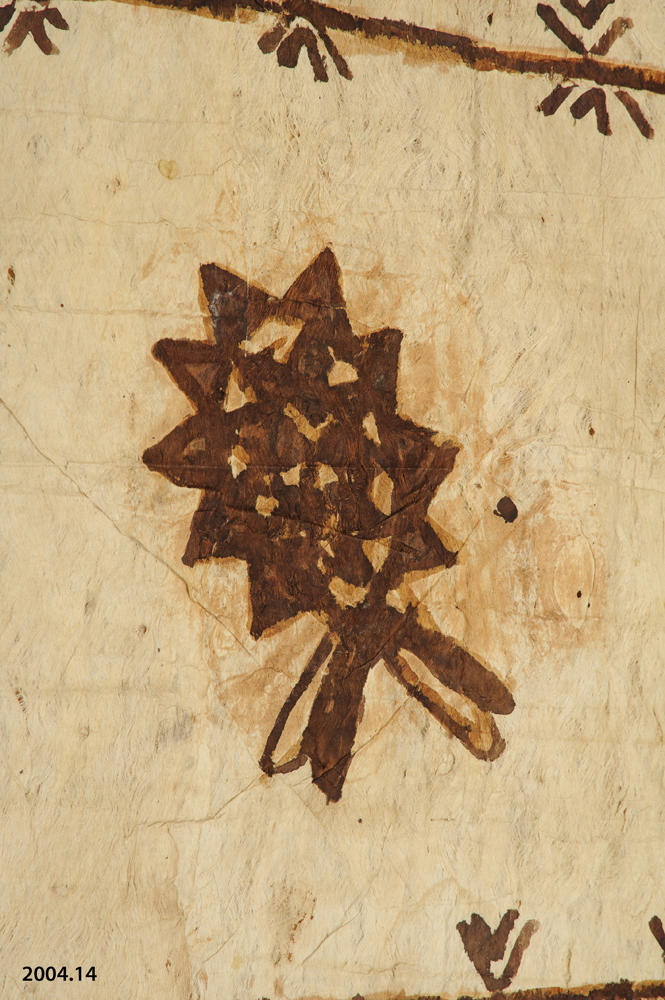
Large, rectangular, cream-coloured barkcloth (tapa) painted with brown motifs and patterns. The overall size has been created by pasting a number of smaller sections together. In some places the front and back layer are coming apart. Painted brown lines divide the textile into 5 bands. The band along one of the shorter sides has been left plain. Each of the dividing lines has been decorated with evenly spaced, x-shaped and chevron patterns. On each longer side (on the bands) are borders. One one side this consists of squares containing geometric patterns, and an inward-facing dentate stripe. On the other side, the border contains the inward-facing dentate stripe only. Each of the decorated bands contains a central semicircular motif with a larger triangular, or another motif on either side. Each band also contains sets of 3 dots arranged in a triangular shape. A band at the base of each centre motif contains lettering (KOE TEMIPALE TAPU - 'The Sacred Temple' - A Mormon motto referring to the most sacred building of the LDS faith in Salt Lake City, USA).
Modern Tongan Barkcloth, Ngatu Fuatanga, Tonga, Western Polynesia Like barkcloth throughout tropical Polynesia, Tongan ngatu was manufactured by wetting and beating together the inner ‘bast’ layer of bark from the Paper Mulberry plant (Broussonetia papyfera). Many Tongan women will do this initial joining of the narrow bark strips into a single sheet alone, working somewhere in the shade during the morning with their heavy wooden anvils (papa) and barkcloth mallets (ike). At another time, several related women will meet together to join their pieces into much larger cloths. These cloths tend to be twice the width of the anvil (some 3-5m), and as long as possible: barkcloths of 20m in length are ordinary, and pieces many hundreds of metres long may be created for the making of important diplomatic gifts. In Tonga and Samoa, women also work communally on the decoration of barkcloth, and this was achieved by taking rubbings from carefully created wooden design boards (kupesi), and then over-painting them by hand with additional patterns and elements. The patterns created by these design boards are also called kupesi, and include named geometric patterns that have been in use in Tonga for three thousand years, as well as newer designs that depict animals, the sun, moon, shooting stars and various other objects. Following the arrival of missionaries in the early decades of the 19th Century, Tonga has become one of the world’s most active centres of Christian worship. Methodism, the New Churches and New Religious Movements are particularly popular, and this barkcloth tells us something about that: the motto painted on the cloth, ’KOE TEMIPALE TAPU’ translates as ‘The Holy Temple’. This refers to the Holy Temple in Salt Lake City, Utah, USA, the sacred centre of the Church of Jesus Christ of Latter Day Saints: at 32% of the Tongan population, the Mormon faith is more popular there than anywhere else on earth. Women will often decorate their ngatu with subjects that express their love for the monarchy, or display their church affiliation like this. Barkcloth, pigment. Late 20th Century. Formerly in the private collection of Ms Ann Grigg and passed to the Horniman Museum in 2004.



